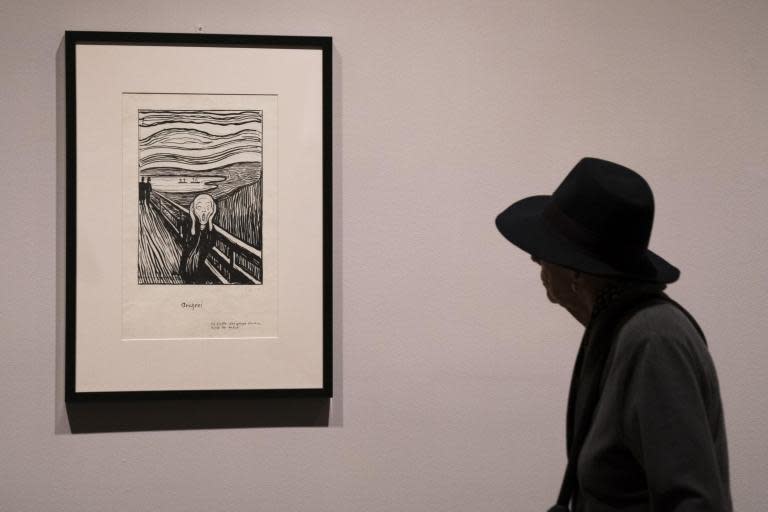The Reader: Scream it out: we’re proud to be hosting Munch exhibition
We’ve been thrilled to see such a positive response to the announcement that the British Museum will exhibit the Norwegian artist Edvard Munch.
Although he was prolific, it is the emotional intensity of The Scream that has reverberated throughout history, making it one of the most recognised images of all time. That The Scream has resonated so widely and become a universal symbol of anxiety is for two reasons. One is that Munch was a master at expressing emotion. He could capture and express his feelings with an intensity like no other. The second is he chose to express this image as a black-and-white lithograph. It meant this most haunting of faces could be circulated quickly, cheaply and widely in print and be seen by more people.
To see the lithograph reproduced so prominently in the pages of the Evening Standard last week felt like the story coming full circle, and a wholly befitting way to announce the arrival of the masterpiece in the UK.
Giulia Bartrum
Curator, British Museum
EDITOR'S REPLY
Dear Giulia
The exhibition of Munch’s prints at the British Museum in April promises to put the artist right back on to the contemporary radar. As you say, it was his technical mastery of printmaking — and, in the case of The Scream, the lithograph — which enabled his work to be widely disseminated, even though he made only a small number of prints of the picture.
And it’s telling that it’s this version, rather than the ones in paint and pastel, which is best known. In some ways The Scream has been a victim of its own ubiquity: it’s perhaps the most instantly recognisable image in art.
That single physical gesture has entered into the common visual language: it’s an emoji (perhaps the ultimate trope); it made an appearance in The Simpsons, and it’s every other Halloween mask.
Actually, what I’m looking forward to in the exhibition are the other works and the story of the artist behind The Scream. We know Munch chiefly from this one image and it will be good to be reminded of the rest of his work in print, not least the haunting Madonna.
Melanie McDonagh, Senior Writer
No-deal will be an economic disaster
For our cities and their surrounding communities a no-deal Brexit would be a disaster. Only half our businesses have been able to plan for Brexit because of uncertainty over future relationships with the EU. Nearly a third of small and medium-sized enterprises say they wouldn’t know where to start (YouGov, Nov 2018).
Our city regions of the Northern Powerhouse and London collectively represent £712 billion — 42 per cent of the UK economy — and are home to more than 23 million people. No deal would be a hammer blow to local economies, all of which would gladly find use for the £2 billion earmarked for a no-deal Brexit. We need to be better prepared for trade post-Brexit. The Government must provide a deal for this. Crashing out is not an option.
Sadiq Khan, Mayor of London
Andy Burnham, Mayor of Greater Manchester
Steve Rotheram, Mayor of the Liverpool City Region
Nick Forbes, leader of Newcastle City Council and member of the North of Tyne Combined Authority
Arsenal are failing to make progress
ARSENAL’S 1-0 loss against West Ham on Saturday was vintage Arsene Wenger 2018. The only change is that after 22 games we have two more points than last year and a manager, Unai Emery, who is very active on the touchline instead of Wenger’s gloomy face.
Victor Garston

 Yahoo News
Yahoo News 

